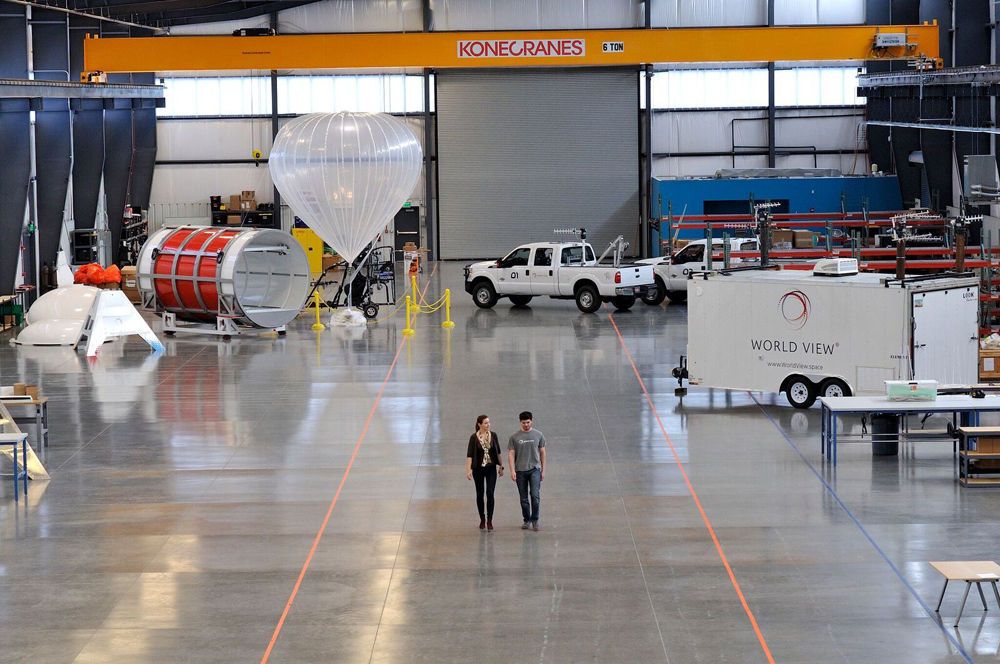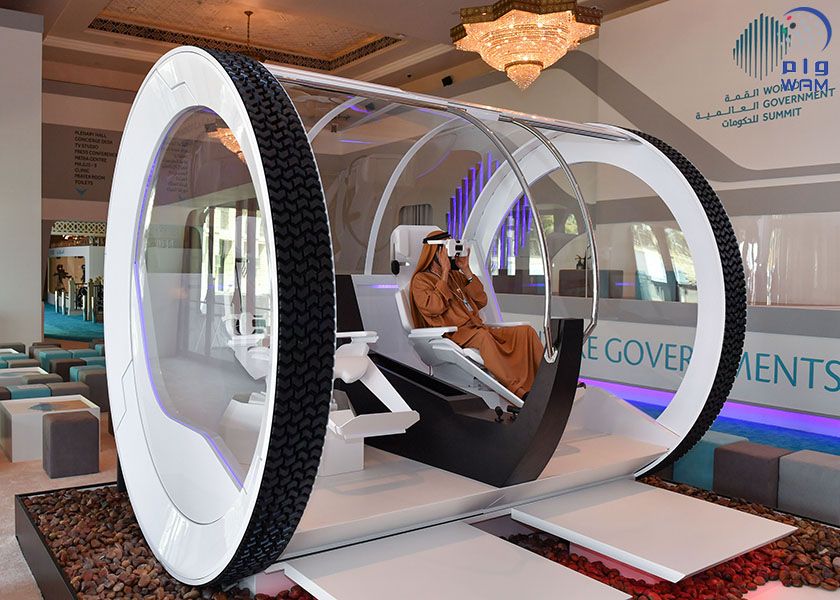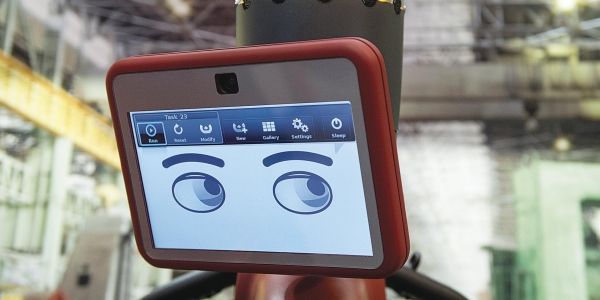Page 10505
Feb 24, 2017
High-Altitude Balloon Company Wants to Open a New Market at the Edge of Space
Posted by Klaus Baldauf in category: space

https://youtube.com/watch?v=GFdXBQPuznU
World View Enterprises, a private company that plans to sell balloon rides to the edge of space, has announced the grand opening of its new headquarters and a conjoined spaceport in Tucson, Arizona.
The new facility will soon be launching World View’s non-crewed high altitude balloons, which could provide a low-cost alternative to launching payloads into space, according to company representatives. The balloons can carry instruments and equipment that could, for example, be used to consistently observe severe weather events or natural disasters. The balloon could also carry equipment for scientific investigations, communications, remote sensing and wealth of other potential applications.
Continue reading “High-Altitude Balloon Company Wants to Open a New Market at the Edge of Space” »
I wanted to share an amazing part of US history demonstrating why history matters.
American Revolution Records from the American Revolutionary War indicate that at least a few Muslims fought on the American side. Among the recorded names of American soldiers are “Yusuf ben Ali” (a member of the Turks of South Carolina community), “Bampett Muhamed” and possibly Peter Salem.
The first country to recognize the United States as an independent nation was the Sultanate of Morocco, under its ruler Mohammed ben Abdallah, in the year 1777. [23] He maintained several correspondences with President George Washington.
Feb 24, 2017
What will the James Webb Space Telescope reveal about the newly discovered exoplanets?
Posted by Klaus Baldauf in category: space
The discovery of seven habitable planets just 40 light years away is certainly impressive, but the fact is, they are still 40 light years away. Unless we’re willing and able to spend thousands of years traveling through space, we won’t be rolling into the TRAPPIST-1 system anytime soon. This means that over the coming decades, advanced scientific instruments closer to home will play very important roles in exploring these distant worlds – perhaps none more so than the James Webb Space Telescope. So what can we expect when it is fired into orbit next year? We checked in with some of the scientists behind yesterday’s hugely exciting discovery to learn how astronomers will use NASA’s next-generation space telescope to probe the secrets of the TRAPPIST-1 system.
Feb 24, 2017
Artificial synapse bridges the gap to brainier computers
Posted by Klaus Baldauf in category: robotics/AI
The human brain is nature’s most powerful processor, so it’s not surprising that developing computers that mimic it has been a long-term goal. Neural networks, the artificial intelligence systems that learn in a very human-like way, are the closest models we have, and now Stanford scientists have developed an organic artificial synapse, inching us closer to making computers more efficient learners.
In an organic brain, neuronal cells send electrical signals to each other to process and store information. Neurons are separated by small gaps called synapses, which allow the cells to pass the signals to each other, and every time that crossing is made, that connection gets stronger, requiring less energy each time after. That strengthening of a connection is how the brain learns, and the fact that processing the information also stores it is what makes the brain such a lean, mean, learning machine.
Neural networks model this on a software level. These AI systems are great for handling huge amounts of data, and like the human brain that inspired them, the more information they’re fed, the better they become at their job. Recognizing and sorting images and sounds are their main area of expertise at the moment, and these systems are driving autonomous cars, beating humanity’s best Go players, creating trippy works of art and even teaching each other. The problem is, these intelligent software systems are still running on traditional computer hardware, meaning they aren’t as energy efficient as they could be.
Continue reading “Artificial synapse bridges the gap to brainier computers” »
Feb 24, 2017
Divided Democrats look for a leader this weekend, likely Keith Ellison
Posted by Zoltan Istvan in categories: futurism, transhumanism
Some #transhumanism futurist stuff midway down the article:
This weekend, the party hosts its big winter meeting in Atlanta with a heavy to-do list and much interest. The big doings drew so many attendees that organizers moved the event from a local hotel to a major trade center.
Dominating the agenda is the election of a Democratic National Committee chairman Saturday; seven hopefuls are in the running. Rep. Keith Ellison of Minnesota is considered the front-runner since he has the endorsements of Sens. Charles E. Schumer, Nancy Pelosi and Elizabeth Warren, among others.
Continue reading “Divided Democrats look for a leader this weekend, likely Keith Ellison” »
Feb 24, 2017
Garmin engineer shot and killed in Kansas
Posted by Karen Hurst in categories: biotech/medical, economics
My apologies ahead of time everyone. LifeBoat is about awareness, discovery, history, social and economics and healthcare. And, I never ever post social situations on our site; however, I must raise this as it is all about humanity, being civilized, showing empathy, and respecting each other for, our passions in tech, science, medicine, etc., and simply for being humans with empathy.
Yesterday, I saw a disgusting report on how an innocent husband and wife who are US citizens and of Pakistan descent where verbally attacked by a horrible man on a flight to Houston, TX.
And, Wednesday a fellow techie lost his life in Kansas for being of Indian descent and his features. The person who shot and killed the young man didn’t even know if the engineer was born in the USA, or immigrated here or a citizen, etc. He just killed him as he verbally attacked him.
Continue reading “Garmin engineer shot and killed in Kansas” »
Feb 23, 2017
Creating integrated circuits just atoms thick
Posted by Karen Hurst in categories: electronics, particle physics
A new technique using liquid metals to create integrated circuits that are just atoms thick could lead to the next big advance for electronics.
The process opens the way for the production of large wafers around 1.5 nanometres in depth (a sheet of paper, by comparison, is 100,000nm thick).
Other techniques have proven unreliable in terms of quality, difficult to scale up and function only at very high temperatures — 550 degrees or more.
Feb 23, 2017
VP tasks Mohammed Bin Rashid Space Centre to lead Mars 2117 project
Posted by Karen Hurst in categories: biotech/medical, government, quantum physics, robotics/AI, space
UAE will be a major player in technology innovation of the future as they like Israel, Africa, Eastern Europe, and various parts of Asia such as the current ones of China and India as well as Australia and Vietnam will be the new emerging leaders in tech innovation. We’re entering a period of radical change and a complete overhaul of science (including medical) and technology thanks to the realities and opportunities of Quantum. The following announcement shows US UAE’s own commitment to being a leader and I promise you there is much more to come from these amazing hotspots of innovation and invention.
Vice President and Prime Minister and Ruler of Dubai, His Highness Sheikh Mohammed bin Rashid Al Maktoum, issued directives to Mohammad Bin Rashid Space Centre, MBRSC, to lead the Mars 2117 project and prepare a 100-year plan for its implementation.
As per his directives, the centre’s plan will focus on preparing specialised national cadres and developing their capabilities in the fields of space science, research, artificial intelligence, robotics and advanced space technologies.
Continue reading “VP tasks Mohammed Bin Rashid Space Centre to lead Mars 2117 project” »
Feb 23, 2017
Job-Killing Computerization Sets Its Sights on the University Researcher
Posted by Karen Hurst in categories: innovation, robotics/AI
Is there nothing sacred for goodness sakes anymore! The robots are replacing the University Research Teams. Personally, I will be shocked if it will indeed (on a massive scale) take over all experimental innovation activities in research.
At this past weekend’s annual meeting of the American Association for the Advancement of Science, scientists also heard broader warnings about the threats to American workers posed by computerized automation.
















